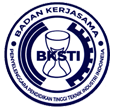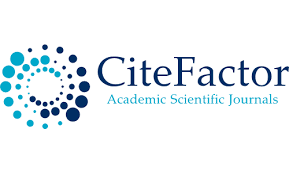Performance Evaluation of Surface Roughness in the Boring Operation of IS 2062 E250 Plate on CNC Machine Using Combined Entropy-Decision Tree-VIKOR Approach
Abstract
Keywords
Full Text:
PDFReferences
Beauchamp Y., Thomas M., Youssef Y.A., Masounave J. 1996. Investigation of cutting parameter effects on surface roughness in lathe boring operation by use of a full factorial design. Computers & Industrial Engineering, 31(3–4): 645-651. https://doi.org/10.1016/S0360-8352(96)00234-3
Biju C.V., Shunmugam M.S. 2019, Performance of magnetorheological fluid based tunable frequency boring bar in chatter control, Measurement, 140: 407-415. https://doi.org/10.1016/j.measurement.2019.03.073
Chern G.-L., Liang J.-M., 2007. Study on boring and drilling with vibration cutting. International Journal of Machine Tools and Manufacture, 47(1): 133-140.
https://doi.org/10.1016/j.ijmachtools.2006.02.017
Gangil M., Pradhan M.K. 2018. Optimization the machining parameters by using VIKOR method during EDM process of titanium alloy. Materials Today: Proceedings, 5(2): 7486-7495. https://doi.org/10.1016/j.matpr.2017.11.420
Hintze W., Schötz R., Mehnen J., Köttner L., Möller C. 2018. Helical milling of bore holes in Ti6Al4V parts produced by selective laser melting with simultaneous support structure removal. Procedia Manufacturing, 18:89-96. https://doi.org/10.1016/j.promfg.2018.11.012
Izelu C.O., Essien E.I., Okwu M.O., Garba D.K. & Agunobi-Ozoekwe C.N. 2019. Lathe boring operation on ASTM A304 steel parameter optimization using response surface methodology. Australian Journal of Mechanical Engineering, https://doi.org/10.1080/14484846.2019.1662534
Klein S., Schorr S., Bähre D. 2020. Quality prediction of honed bores with machine learning based on machining and quality data to improve the honing process control. Procedia CIRP, 93: 1322-1327. https://doi.org/10.1016/j.procir.2020.03.055
Kumar S., Dave H.K., Desai K.P. 2018. Methodology for database development for electro discharge boring of aerospace material. International Journal of Materials and Product Technology, 56(4): 295 - 312. https://doi.org/10.1504/IJMPT.2018.092072
Lawrance G., Paul P.S., Ezhil M., Ashish J.E., Gokul R., Subhash M. 2020a. Influence of stainless steel impact damper on tribological properties during boring process. Materials Today: Proceedings, https://doi.org/10.1016/j.matpr.2020.06.260
Lawrance G., Daniel E., Paul P.S., Shaji J., Thankachan T. 2020b. Study on the influence of multi-layered nano metal oxide coating on cutting performance during boring of hardened steel. Materials Today: Proceedings, 22: 1731-1736. https://doi.org/10.1016/j.matpr.2020.02.192
Liu H., Cheng J., Wang T., Chen M. 2019. Magnetorheological finishing of an irregular-shaped small-bore complex component using a small ball-end permanent-magnet polishing head. Nanotechnology and Precision Engineering, 2(3): 125-129
https://doi.org/10.1016/j.npe.2019.10.001
Lotfi M., Amini S., Aghayar Z., Sajjady S.A., Farid A.A. 2020. Effect of 3D elliptical ultrasonic assisted boring on surface integrity. Measurement, 163, 108008,
https://doi.org/10.1016/j.measurement.2020.108008
Majumder H., Maity K. 2018. Application of GRNN and multivariate hybrid approach to predict and optimize WEDM responses for Ni-Ti shape memory alloy. Applied Soft Computing, 70: 665-679. https://doi.org/10.1016/j.asoc.2018.06.026
Melo T.F.L., Filho S.L.M.R., Arruda É.M., Brandão L.C. 2019. Analysis of the surface roughness, cutting efforts, and form errors in bore reaming of hardened steel using a statistical approach. Measurement, 134:845-854. https://doi.org/10.1016/j.measurement.2018.12.033
Patel M. and Deshpande V. 2014. Application of Taguchi approach for optimisation roughness for a boring operation of E250 B0 for standard IS: 2062 on CNC TC. International Journal of Engineering Development and Research, 2(2): 2528-2537
Prabhu L., Kumar S.S., Dinakaran D., Jawahar R. 2020. Improvement of chatter stability in boring operations with semi active magneto-rheological fluid damper. Materials Today: Proceedings, 33: 420-427. https://doi.org/10.1016/j.matpr.2020.04.651
Priti, Singh M., Singh S. 2020. Micro-machining of CFRP composite using electrochemical discharge machining and process optimization by entropy-VIKOR method. Materials Today: Proceedings. https://doi.org/10.1016/j.matpr.2020.09.463
Ratnam C., Kumar K.A., Murthy B.S.N., Rao K.V. 2018. An experimental study on boring of Inconel 718 and multi response optimization of machining parameters using response surface methodology. Materials Today: Proceedings, 5(13): 27123-27129. https://doi.org/10.1016/j.matpr.2018.09.020
Saleh M.K.A., Nejatpour M., Acar H.Y., Lazoglu I. 2021. A new magnetorheological damper for chatter stability of boring tools. Journal of Materials Processing Technology, 289, 116931. https://doi.org/10.1016/j.jmatprotec.2020.116931
Sathianarayanan D., Karunamoorthy L., Srinivasan J., Kandasami G. S. & Palanikumar K. 2008. Chatter suppression in boring operation using magnetorheological fluid damper. Materials and Manufacturing Processes, 23(4):329-335. https://doi.org/10.1080/10426910701860897
Sastry C.C., Hariharan P. & Kumar M.P. 2019. Experimental investigation of dry, wet and cryogenic boring of AA 7075 alloy. Materials and Manufacturing Processes, 34(7): 814-831. https://doi.org/10.1080/10426914.2019.1605174
Schmidt R., Strodick S., Walther F., Biermann D., Zabel A. 2020a. Influence of the process parameters and forces on the bore sub-surface zone in BTA deep-hole drilling of AISI 4140 and AISI 304 L. Procedia CIRP, 87:41-46. https://doi.org/10.1016/j.procir.2020.02.010
Schmidt R., Strodick S., Walther F., Biermann D., Zabel A. 2020b. Analysis of the functional properties in the bore sub-surface zone during BTA deep-hole drilling. Procedia CIRP, 88: 318-323. https://doi.org/10.1016/j.procir.2020.05.055
Singh G., Mann G.S., Pradhan S. 2018. Improving the surface roughness and flank wear of the boring process using particle damped boring bars. Materials Today: Proceedings, 5(14): 28186-28194. https://doi.org/10.1016/j.matpr.2018.10.062
Venkata Rao K., Murthy B.S.N., Mohan Rao N. 2013. Cutting tool condition monitoring by analyzing surface roughness, work piece vibration and volume of metal removed for AISI 1040 steel in boring. Measurement, 2013, 46(10): 4075-4084
https://doi.org/10.1016/j.measurement.2013.07.021
Venkata Rao K., Murthy B.S.N., Mohan Rao N. 2014. Prediction of cutting tool wear, surface roughness and vibration of workpiece in boring of AISI 316 steel with artificial neural network. Measurement, 51:63-70. https://doi.org/10.1016/j.measurement.2014.01.024
Vikram K.A., Kantha T.V.K., Shabana, Prasad R.D.V. 2020. Response optimization using VIKOR while machining on lathe under dry and minimum quantity and lubrication conditions – A case study. Materials Today: Proceedings, 27(3): 2487-2491. https://doi.org/10.1016/j.matpr.2019.09.223
Wu Z., Ahmad J., Xu J. 2016. A group decision making framework based on fuzzy VIKOR approach for machine tool selection with linguistic information. Applied Soft Computing, 42: 314-324. https://doi.org/10.1016/j.asoc.2016.02.007
Yuvaraju B.A.G., Nanda B.K. 2018. Prediction of vibration amplitude and surface roughness in boring operation by response surface methodology. Materials Today: Proceedings, 5(2): 6906-6915. https://doi.org/10.1016/j.matpr.2017.11.352
Zhang H., Shen X., Bo A., Li Y., Zhan H., Gu Y. 2017. A multiscale evaluation of the surface integrity in boring trepanning association deep hole drilling. International Journal of Machine Tools and Manufacture, 123:48-56. https://doi.org/10.1016/j.ijmachtools.2017.07.005
DOI: http://dx.doi.org/10.22441/ijiem.v2i1.10190
Refbacks
- There are currently no refbacks.

This work is licensed under a Creative Commons Attribution-NonCommercial 4.0 International License.
IJIEM - Indonesian Journal of Industrial Engineering & Management
Program Pascasarjana Magister Teknik Industri Universitas Mercu Buana
Kampus Menteng - Gedung Tedja Buana, Floor 4th
Jl. Menteng Raya No. 29 Jakarta Pusat- Indonesia
Tlp.: +62 21 31935454 Fax: +62 21 31934474
http://publikasi.mercubuana.ac.id/index.php/ijiem
Email: [email protected]

This work is licensed under a Creative Commons Attribution-NonCommercial 4.0 International License.
The journal is indexed by:





1.png)
.png)
.png)
.png)







